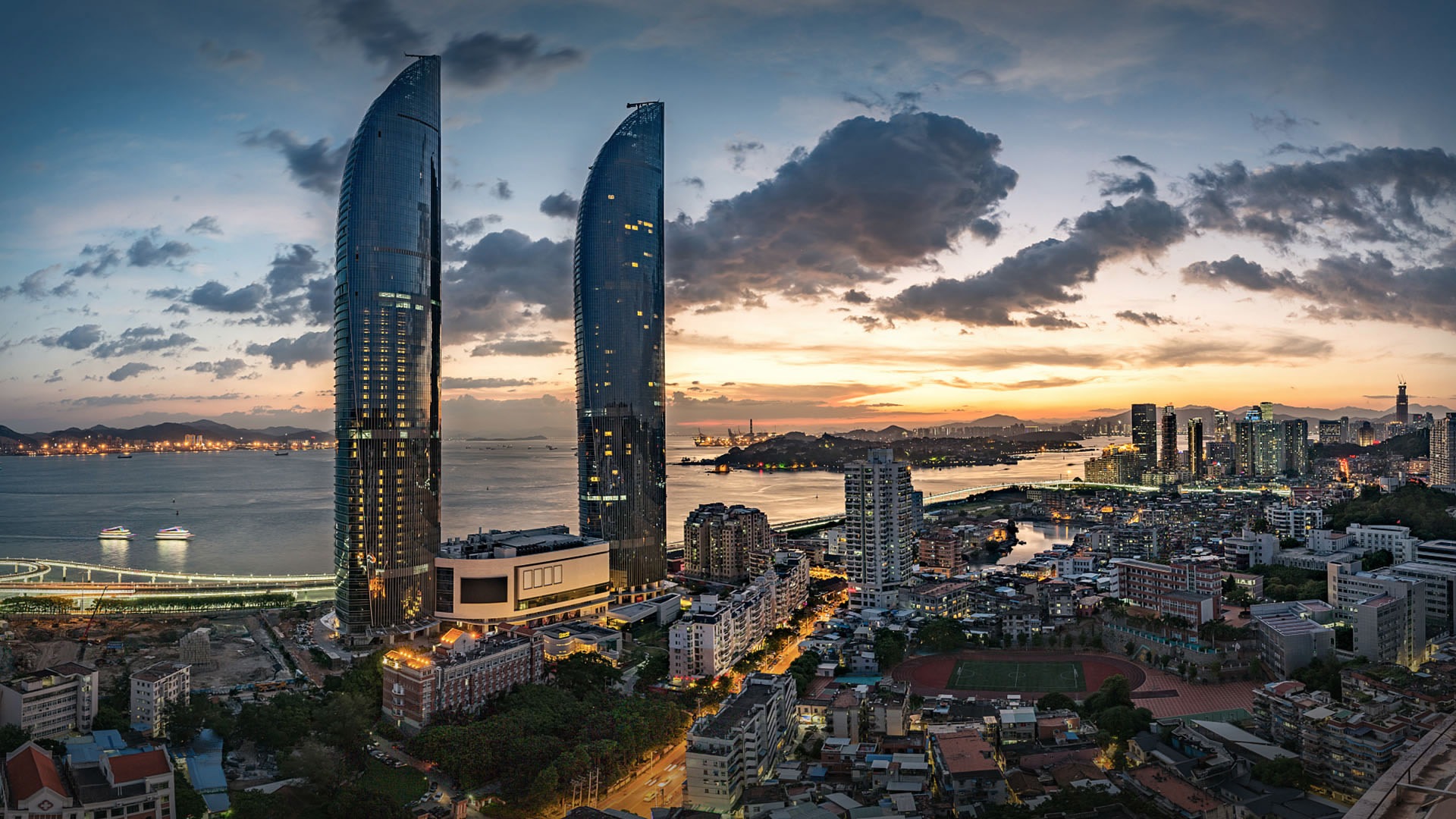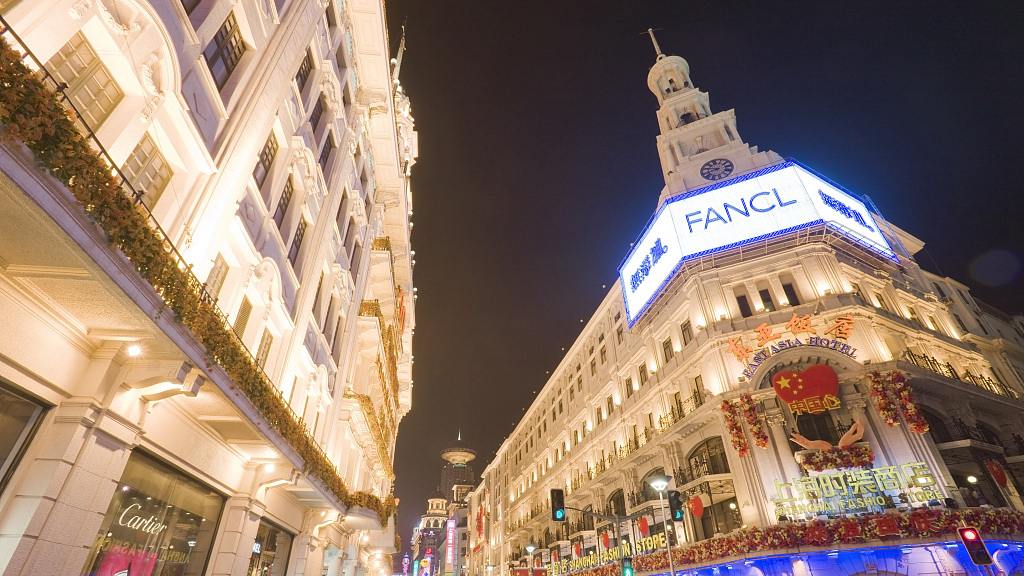
Editor's note: Keith Lamb is a University of Oxford graduate with an MSc degree in Contemporary Chinese Studies. His primary research interests are international relations of China and China's "socialism with Chinese characteristics." The article reflects the author's opinions, and not necessarily the views of CGTN.
"How does this city look any worse than a British one? The roads and pavements are better, all the streets are tree-lined, there are no boarded-up shops, and the transport system is clean and well organized."
This was roughly the conversation I had when walking around a Chinese city in 2012. This wasn't Beijing, Shanghai, or Shenzhen, this was Yinchuan, capital of the Ningxia Hui Autonomous Region.
Previously, this province in China's once "wild-west" was a dustbowl. The poverty was such that those living in the brick shacks, by the railway track, clearly didn't bathe much. It wasn't a nice place to visit but that was in 2006 and over six years there had been a significant change.
Perhaps Chinese cities haven't overtaken all Western cities. There are still cities in China that leave much to be desired for. Even in many of the pleasant cities, one can find brutal architectural landscapes that are ripe for improvement. However, Western cities have their fair share of aesthetic problems too.
For example, Paris, regarded as one of the best European cities, with its fine architecture, has severe deficiencies. Stray not too far from the center and the all-pervasive graffiti begins. This ever-present graffiti, just one sign of urban decay, also welcomes tourists who drive into Paris, creating the impression of a dystopian scene from a Mad Max sequel rather than the capital of romance and culture.
So where it is that Chinese cities are starting to surpass Western ones? Firstly, China's municipal governments are constantly improving their cityscape.
Over the last ten years, China's cities have been greening their cities in a process, which I call "Xiamenization." This is because the city of Xiamen, which has often been voted as one of China's most livable cities, is known as "the Garden of the Sea." This is not because Xiamen has more parks than anywhere else but because greenery is everywhere to the extent that the city itself feels like it is the park.
What Xiamen started in 1994 is now taking place across China. For example, on a visit to Tibet, in 2014, I was impressed by Lhasa's beauty but I had imagined that this was a display for the tourists. However, upon next visiting Xining on the Tibetan Plateau, which has few tourists, I immediately saw the similarities with Xiamen albeit with flora suited to high altitudes.
Chengdu the capital of Sichuan province is also in the process of Xiamanization. It is a giant city with over 8 million inhabitants, with huge ambitions for making the city fit for China's "Ecological Civilization." In 2015 Chengdu pledged to be a "City of Gardens and Parks" and create a low-carbon city.
As part of this process, Chengdu is building the Tianfu Greenway, for pedestrians and bikers, which will be the world's longest green corridor. Chengdu plans to complete construction on what will be 20,000 kilometers of greenways by 2040.

Nanjing Road Pedestrian Street in Shanghai. /VCG
Nanjing Road Pedestrian Street in Shanghai. /VCG
It is not only above ground where superlatives describe China's development but underground too. 33 mainland Chinese cities now have subways with an incredible 21 of them being constructed only within the last eleven years.
The Shanghai, Beijing, and Guangzhou subway systems, with 676km, 628km, and 478km of track respectfully, are the world's three largest subway systems. In comparison, the London Underground has 402km and Paris has 214km. Furthermore, China's new underground trains qualitatively are of a completely different caliber with WiFi access in trains and stations. They also provide a smooth ride especially compared to the rattling Paris and London trains.
Going back above ground, Chinese cities being denser than Western ones create an environment where there is constant hustle and bustle. While Napoleon said "Britain is a nation of shopkeepers" this phrase actually fits more aptly with China's present conditions. The sheer density of the urban environment makes small businesses thrive and every roadside is an opportunity for a store or restaurant. This is no mean feat considering how popular internet shopping is in China.
Furthermore, the dense high-rise living where gardens are shared, in contrast to the masses of small private plots in a city like London, makes city life more sociable and I would guess also makes the grand environmental plans China has for its cities economical.
Chinese high-rise cities have developed at an astonishing pace and will continue to do so. Shanghai's Pudong New Area is perhaps the best-known example of the dynamism of China's metropolitan growth which has been transformed itself from farmland into the iconic cityscape.
Cities are important for China because they are integral for bringing people together which leads to the sharing of ideas and innovation. A small recent example is of the 60, old-fashioned looking, street-lamps in Wuhan's Jianghan Road which double up as wireless charging stations.
However, China is set to redefine the nature of the urban platform, which will further spur on innovation. China is in the process of creating several megacities which will, through high-speed transport, connect already large conurbations into one organism.
The Pearl River Delta megacity is the largest of these new giant cities. The plan for the creation of this megacity was announced in 2009 and will cost 300 billion U.S. dollars. The Pearl River Delta megacity will include both Guangzhou and Shenzhen with populations of 13.5 and 11.38 million respectively, as well as seven other large cities, which will create a megacity with a population of 58.74 million.
In some ways, China has certainly overtaken Western cities while in other areas, China is still catching up. However, where China's cities are far ahead of the West is in their dream, their ambition and their wherewithal to never stop improving.
(If you want to contribute and have specific expertise, please contact us at opinions@cgtn.com.)

